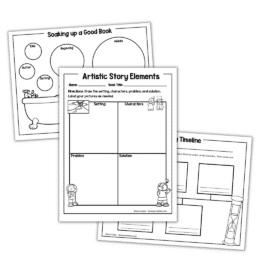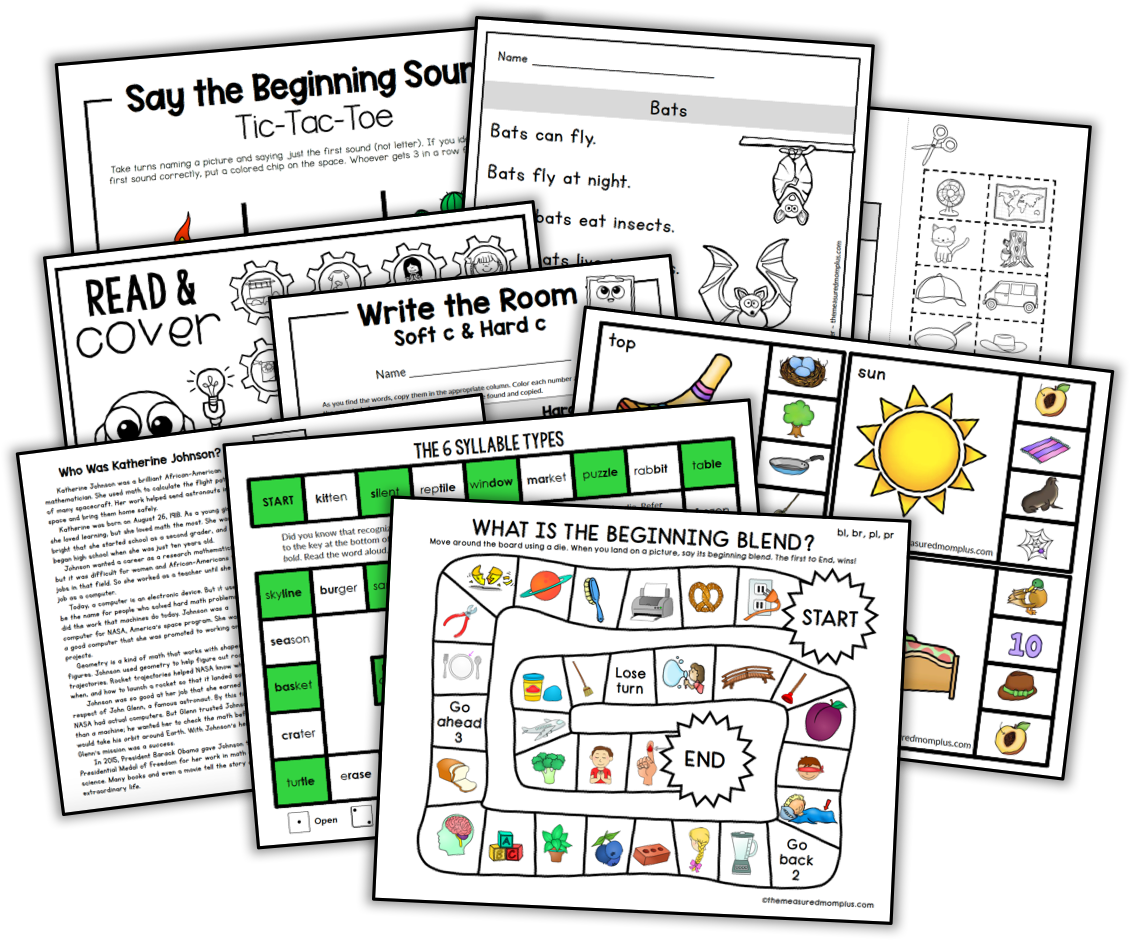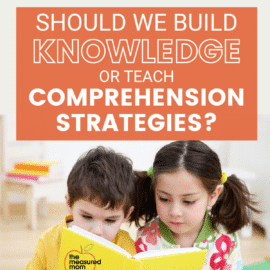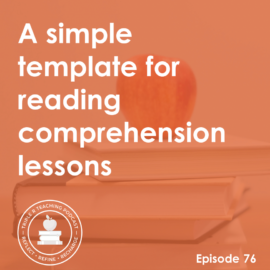
Welcome back to our series about reading comprehension strategies!
In this post I’ll explain how an awareness of text structure can help students understand text. I’ll also share a simple routine for teaching narrative text structure.
What is text structure?
Text structure is how an author organizes a text. Research shows that explicit instruction in text structure leads to gains in reading comprehension (Williams, 2005).
There are two types of text structure: narrative and expository.
- Narrative text – tells a story or describes a series of events
- Expository text – gives information
If readers can anticipate that a text will contain certain types of information, and that information will be presented in a certain way, they’ll have an easier time picking out the key ideas and are more likely to remember them.
Moats & Hennessy, 2010
When should we begin teaching text structure?
We can begin teaching text structure even before students begin to read – as early as kindergarten! We can do this through interactive read alouds (Oakhill et al, 2015).
I recommend starting with narrative text structure, because story elements are much easier for students than expository text structures (coming in the next post of this series).

A routine for teaching narrative text structure
1. Choose a familiar story or variation of a popular tale.
2. Before reading, present a series of questions that you’ll be pausing to ask as you read aloud the text.
- Who is the story about?
- What is he or she trying to do?
- What happens when he or she tries to do it?
- What happens in the end?
3. Pause to ask each question at an appropriate point in the read aloud.
4. As a class, complete a graphic organizer. You can display the organizer on a large screen and fill it in with your students’ input. Eventually, they will be able to complete an organizer with a partner or independently.

5. Teach your students to retell the story using five fingers as a scaffold.

Another retelling option is to use an anchor chart or bookmark with a series of images as prompts. Paris & Paris (2007) found that students who received explicit instruction in these kinds of techniques showed better comprehension than those who did not.
I hope this post was helpful!

Get your free graphic organizers!
And check out the rest of our comprehension strategies series by clicking the image below!
References
Moats, L. C., & Hennessy, N. (2010) Digging for meaning: Teaching text comprehension. Sopris West Educational Services.
Oakhill, J., Cain, K., & Elbro, C.(2015). Understanding and teaching reading comprehension. Routledge.
Paris, A. H., & Paris, S. G. (2007). Teaching narrative comprehension strategies to first graders. Cognition and Instruction, 25(1), 1-2.
Williams, J. P. (2005). Instruction in reading comprehension for primary-grade students: A focus on text structure. The Journal of Special Education, 39(1), 6-18.






Leave a Comment